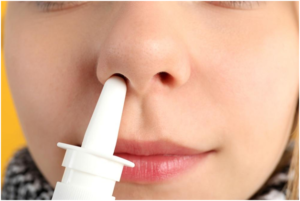Having dry eyes is a common problem that may cause discomfort, especially for those that wear contact lenses. In fact, long-term use of contact lenses can be a contributing factor to developing dry eyes. With this, we will discuss how dry eyes develop in contact lens users and how to care for your eyes while wearing contact lenses.
How Dry Eye Syndrome Affects Contact Lens Users
Dry eye syndrome refers to the condition where eyes cannot produce enough tears or when tears evaporate too quickly. As it is a widely known fact that tears are essential in maintaining the health and comfort of our eyes, these symptoms must not be overlooked. This urgency is made clearer as tears help lubricate the eyes’ surface, provide essential nutrients, and protect them against infections.
A compromised tear film results in dry eye symptoms, which include redness, itchiness, a gritty or sandy sensation in the eyes, sensitivity to light, blurred vision, and even excessive tearing (as a reflex response to dryness). Severe symptoms can significantly impact quality of life, making daily activities and contact lens usage uncomfortable.
For contact lens wearers, there is a high risk of developing dry eyes syndrome due to several factors, such as:
- Contact lenses can disrupt the natural tear film and interfere with the regular distribution of tears across the eye’s surface. This results in an increased rate of tear evaporation, exacerbating dry eye symptoms.
- Contact lenses can act as a barrier that limits the oxygen supply to the front surface of the eye. This reduction in oxygen can cause the eyes to become dry and irritated.
- The materials used in contact lenses can also be a factor in developing dry eyes. Some lenses may have a higher tendency to attract and retain deposits from the tear film or the surrounding environment, leading to increased friction and discomfort.
- Improper contact lens hygiene or wearing lenses for extended periods without breaks can further contribute to dryness. Failure to clean the lenses properly or using inadequate lens care solutions can result in a buildup of debris and bacteria on the lens surface, which can irritate the eyes and disrupt the tear film.
How to Manage Dry Eyes When Wearing Contact Lenses
Taking care of your dry eyes is crucial if you want to continue using contact lenses without experiencing any discomfort. Here are some ways you can do so.
1. Practise Good Hygiene
Maintaining good hygiene is essential for contact lens wearers to prevent dry eyes. Make sure to wash your hands thoroughly with soap and water before touching or handling your contact lenses. This simple step helps minimise the risk of transferring dirt, bacteria, or other irritants onto your lenses, which can contribute to dryness and discomfort.
2. Replace Your Solution and Clean Your Lens Case
Keeping your contact lens case clean and replacing the solution daily is crucial for maintaining healthy eyes and preventing dryness. Bacteria and other contaminants can accumulate in your lens case over time, leading to eye irritation. Therefore, regular cleaning and replacing of the solution reduces infection risk and alleviates dry eye symptoms.
3. Follow a Proper Lens Cleaning Routine
To prevent dry eyes, you must clean your contact lenses as per your eye care professional’s instructions. Use the recommended cleaning solutions and follow the prescribed cleaning regimen. Avoid using tap water or saliva to wet or clean your lenses, as they may introduce harmful microorganisms that can cause eye irritation.
4. Give Your Eyes a Break
Allowing your eyes to breathe without contact lenses can help you with dry eyes. Consider taking breaks from wearing your lenses during the day, especially during prolonged periods of screen time or in dry or dusty environments. By giving your eyes some time to rest, you can reduce the strain on your tear film and alleviate dryness.
5. Stay Hydrated
Staying well-hydrated is crucial for maintaining eye health. Drink plenty of water throughout the day to ensure your body stays properly hydrated, which can help support tear production and prevent dryness. Additionally, consider using a humidifier in dry environments to add moisture to the air around you.
Soothe Your Eyes with Our Japanese Cooling Eye Drop
When it comes to managing dry eyes, finding a reliable and effective solution is essential. The Sato DORAMA NEO Eye Drops can be the dry eye remedy that you need. This Japanese cooling eye drop has gained popularity in Singapore for its ability to provide gentle, soothing relief for red and irritated eyes.
Whether your eyes are tired from prolonged screen time or irritated due to exposure to allergens and dust particles, Sato DORAMA NEO Eye Drops by Sato Pharmaceuticals offer a cooling sensation that can help alleviate discomfort. Additionally, these eye drops also serve as a preventive measure by effectively removing foreign particles from the eyes. By incorporating our Japanese eye drops into your eye care routine, you can reduce the risk of eye diseases and maintain optimal eye health. To know more about improving your eye health, check out our five tips on how to take care of your eye health and maintain good eyesight.





